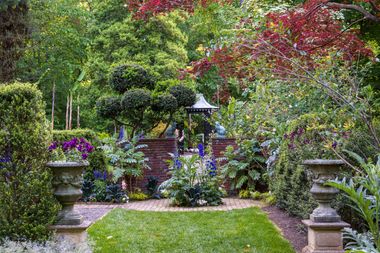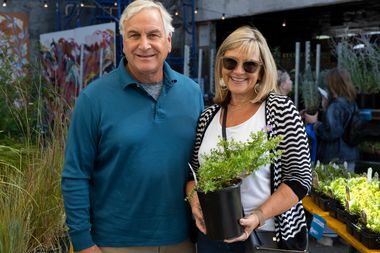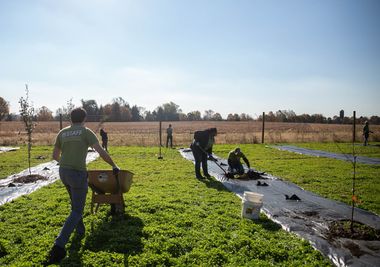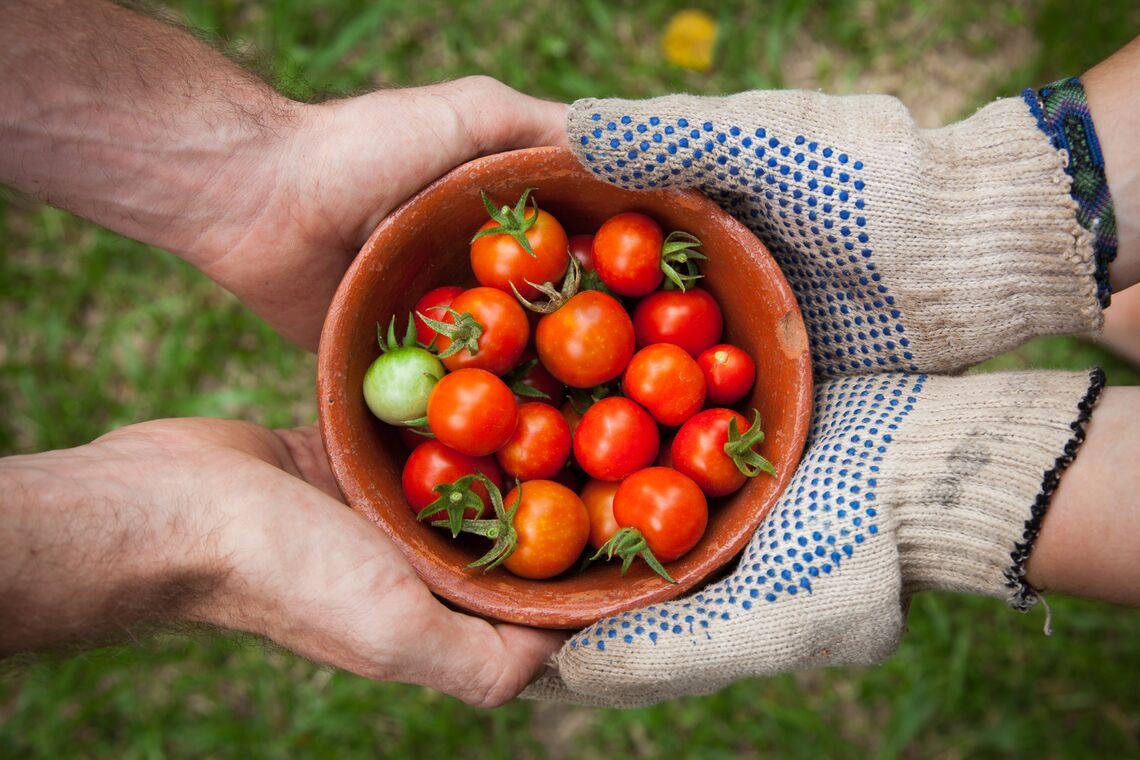



How to Help Your Veggies Survive the Heat
gardening

By Julia Lowndes
Rain, humidity and sweltering temperatures can wreak havoc on some gardens. The hot days of late summer can be tough on your ripening veggies and delicate herbs, but don’t give up on them yet. With a few precautions and simple tricks, your crops will survive the heat and produce a delicious harvest to thank you for your efforts.
Plan Ahead
Some plants are made to survive extreme weather, while others are more sensitive. Even if they can endure the heat, certain plants decline in quality the longer they’re exposed to hot weather. Kale will turn bitter and tough after the first heatwave, making it less enjoyable than if it had encountered a frost.
To avoid bitter kale or crops that go to seed too early, it’s essential to look back on your past successes. According to Sally McCabe, Associate Director of Community Education at PHS, gardeners should note which plants struggled in past summers in order to plan for future yields. Instead of accepting subpar crops, adjust your planting schedule to the weather.
“When some crops hit hot weather, they go to seed really fast,” she explains. “You can continue to plant them and eat them when they’re tiny before they go to seed, but the minute they get stressed out they go to seed.”
Plant cool-weather plants like kale before or after midsummer heat, and save hardier crops like eggplant, peppers and summer squash for the warmest months. Make a note of what grows well and adjust your timing next year if needed.
Protection is Key
If your garden could speak, it would probably ask for some air conditioning. The next best thing you can do is invest in protection from the elements.
“We’re heading into a really different growing environment for this region, and crop covers and salt hay around plants are probably the most important things you can do,” says Joe Revlock, coordinator of volunteer services at the Summer Winter Community Garden.
Crop covers are a simple way to protect your garden from weeds, pests, excessive wind and severe sunlight. Shade netting is lightweight and effective; it promotes air circulation while shielding crops from the sun.
If your vegetables don’t love this weather, weeds sure will. One heavy rainfall is all it takes for weeds to sprout up and take over your garden. Instead of spraying herbicide or spending hours weeding, try using salt hay. This durable material naturally suppresses weeds all summer long.
“In this heat and humidity, mold tends to set in. Keeping the weeds away from your plants means there’s going to be more airflow, which will cut down on how fast fungus multiplies,” explains Sally.
Study the Weather
Keeping track of rain patterns protects your crops from over-watering, saves time and conserves water. There’s not much to be done for your plants during a downpour. Just stay off the mud to avoid soil compaction and check for slugs and bugs the next day.
“You need to watch things because the weather is just so iffy,” says Sally. ““But if we don’t get rain for three days, we need to water.”
Extreme heat holds potential health dangers for everyone, so it might be wise to stay in the AC as temperatures push 90 degrees. “The weather is not just hard on the plants,” she says, “It’s hard on the gardener too.”
If the desire to be outdoors is too strong, take the necessary precautions. Wear protective gear and sunscreen when gardening during the day, or plant at night when the temperatures are lower, and the sun is less harsh.

Practice Proper Picking
Your crops made it through the summer -- now what? Harvesting in extreme weather requires extra care and attention. Veggies are vulnerable and prone to damage when they’re overheated, so pick in the coolest hours of the day and protect your harvest from the sun.
“Cool down anything you pick as soon as you can. If you’re picking greens or soft vegetables or herbs, take a bucket of water to the garden with you and put it right into the water,” says Sally. “The second you pick it, it starts to degrade, especially in 90-degree weather.”
Intense rain can make prime picking times unpredictable. If you’re due for a downpour, Sally recommends harvesting plants even if they’re relatively small. “Zucchini that’s five or 6 inches is a good size to pick. If you don’t pick it and you get rain, tomorrow your zucchini is going to be 12 inches and the next day it will be 2 feet.”
Look to the South
This hot, damp weather is close to what you’d find in the South or tropical climates. Instead of fighting against the weather, look to the South for gardening inspiration. “Traditional Southern greens are what we should be growing now in the summer,” says Sally.
-
Lettuce won’t do well this season, but if you’re really missing greens, try Asian greens or Malabar spinach, whose tough leaves prosper in heat and humidity.
-
Sweet potatoes, taro, swiss chard and collards -- all Southern staples -- will survive a heat flash.
-
Within families of plants, certain species fair better than others during the balmy summer months. Instead of the common green bean, plant Southern beans like cowpeas and lima beans, which can survive both rain and high temperatures.
Want to learn more? Sign up for PHS's monthly newsletter for more gardening tips and tricks.